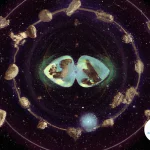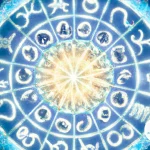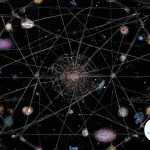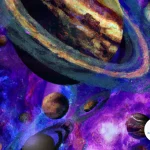Welcome to the fascinating world of astrology and the impact it can have on relationships. Astrology has long been used as a tool for understanding human dynamics and analyzing the various aspects that influence our connections with others. In this article, we will delve into the concept of astrological aspects and explore their significance in astrology. Whether you’re curious about the definition of aspects, the different types of aspects, or how they can shape romantic and platonic relationships, this article will provide you with a detailed analysis. Let’s embark on this astrological journey together and uncover the intricate ways in which aspects impact our relationships.
What Are Astrological Aspects?
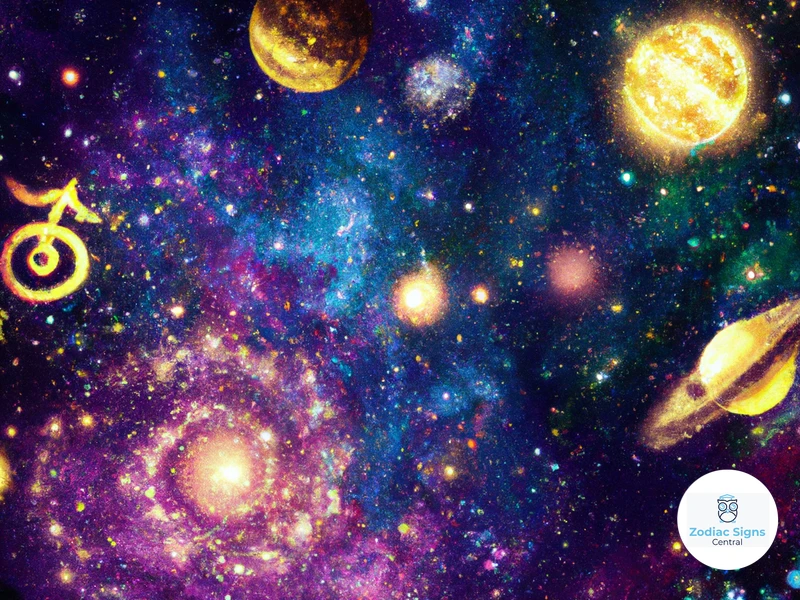
Astrological aspects refer to the angular relationships between celestial bodies, such as planets or points, within a birth chart. These aspects are formed when two or more celestial bodies are a certain distance apart, creating geometric angles. Each aspect carries its own unique energy and affects the overall dynamics of a chart. It reveals the various connections and influences between different planetary energies and how they interact with one another. The aspects give us insights into the strengths, challenges, and potentials associated with different areas of our life. They shape our personality traits, relationships, and life experiences. Understanding the aspects in a birth chart is crucial for gaining a deeper understanding of an individual’s strengths, weaknesses, and compatibility with others. By analyzing the aspects, astrologers can provide valuable insights into the complex nature of our relationships and guide us towards a deeper understanding of ourselves.
1. Definition of Aspects
Aspects in astrology are defined as the angular relationships between celestial bodies within a birth chart. These relationships are measured in degrees and can be categorized into different types based on the specific angle formed. The aspects provide us with valuable information about how different energies interact and influence each other. Here are some key aspects and their definitions:
1. Conjunction: A conjunction occurs when two celestial bodies are within a close distance of each other, typically within 10 degrees. This aspect emphasizes a blending of energies, intensifying the qualities of the involved planets or points. It can indicate a strong connection or fusion of energies, depending on the planets involved.
2. Opposition: An opposition occurs when two celestial bodies are approximately 180 degrees apart. This aspect represents a polarized dynamic, where the energies of the planets are in direct conflict or opposition. It often signifies a need for balance and integration between the qualities represented by the planets.
3. Trine: A trine occurs when two celestial bodies are approximately 120 degrees apart. This aspect represents a harmonious flow of energy between the planets involved. It indicates ease, support, and natural talents associated with the planets in question. Trines are generally considered positive and favorable aspects.
4. Square: A square occurs when two celestial bodies are approximately 90 degrees apart. This aspect signifies tension, challenges, and conflicts between the energies represented by the planets. It often indicates areas of growth, lessons to be learned, and the need for taking action to resolve the conflicting energies.
5. Sextile: A sextile occurs when two celestial bodies are approximately 60 degrees apart. This aspect represents opportunities, cooperation, and positive communication between the energies of the planets involved. It indicates potential for growth, creativity, and harmony in the areas represented by the planets.
Understanding these aspects is essential for analyzing a birth chart and gaining insights into the dynamics of an individual’s personality and relationships. By examining the specific aspects within a chart, astrologers can provide valuable guidance on how to navigate challenges, harness strengths, and cultivate harmonious connections in various areas of life. For a deeper understanding of compatibility between different aspects, you can explore the significance of moon and rising sign compatibility here.
2. Importance of Aspects in Astrology
Aspects play a vital role in astrology as they provide valuable insights into the dynamics and influences within a birth chart. Here are a few reasons why aspects are of utmost importance:
1. Understanding Planetary Connections: Aspects help us understand how different planetary energies interact with one another. They reveal the flow of energy, whether it is harmonious or challenging, between the celestial bodies involved. For example, a conjunction aspect (when two planets are located in close proximity) enhances their combined energy, intensifying their impact on the individual’s personality or experiences.
2. Revealing Strengths and Challenges: Each aspect carries its own qualities and characteristics that can shape an individual’s strengths and challenges. For instance, a trine aspect (when two planets are approximately 120 degrees apart) represents a harmonious flow of energy, indicating talents and natural abilities in the corresponding areas of life. On the other hand, a square aspect (when two planets are approximately 90 degrees apart) signifies tension and challenges that need to be navigated and overcome.
3. Predicting Life Events: Aspects can be used to predict various life events and experiences. Certain aspects, such as conjunctions or oppositions, are known to trigger significant life events or turning points. By studying the aspects within a birth chart, astrologers can offer insights into potential opportunities, challenges, and shifts in various areas of life, including relationships, career, and personal growth.
4. Compatibility Assessment: Aspects are crucial in relationship astrology as they indicate the compatibility and dynamics between individuals. Harmonious aspects between two individuals’ charts can signify a strong connection and compatibility, while challenging aspects may suggest areas of conflict or growth. By analyzing the aspects in relationship astrology, astrologers can provide guidance on understanding the strengths and challenges in partnerships.
It is important to remember that aspects do not work in isolation; they interact with other factors in a birth chart, such as the houses and the rising sign. These factors influence the overall interpretation of the aspects and provide a more nuanced understanding of an individual’s astrological makeup. Understanding the importance of aspects allows us to delve deeper into the complexities of astrology and gain valuable insights into our lives and relationships.
3. Types of Aspects
In astrology, there are different types of aspects that play a significant role in shaping the energy of a birth chart. The most common types of aspects include the conjunction, sextile, square, trine, and opposition. The conjunction occurs when two celestial bodies are in close proximity, amplifying their energies and creating an intense fusion. A sextile forms when two celestial bodies are approximately 60 degrees apart, allowing for harmonious and supportive interactions. The square aspect arises when two celestial bodies are at a 90-degree angle, indicating tension, challenges, and opportunities for growth. The trine occurs when two celestial bodies are approximately 120 degrees apart, representing ease, flow, and a natural affinity between energies. Lastly, the opposition takes place when two celestial bodies are directly opposite each other, symbolizing a need for balance and integration. Each type of aspect carries its own unique energy and influences the dynamics of a birth chart in distinct ways. Understanding the different types of aspects is essential for astrologers to provide accurate insights and guidance in interpreting a person’s natal chart.
4. Major Aspects
In astrology, major aspects are considered to be the most influential and significant angles formed between celestial bodies in a birth chart. These aspects have a stronger impact and are therefore given more weight in astrological interpretations. The major aspects include the conjunction, opposition, trine, square, and sextile.
The conjunction occurs when two celestial bodies are in close proximity, creating a powerful merging of their energies. This aspect signifies a strong connection and potential blending of qualities.
The opposition takes place when two celestial bodies are positioned directly across from each other, creating a tension and contrast between their energies. This aspect often highlights challenges and the need for balancing opposing forces.
The trine represents a harmonious and flowing connection between two celestial bodies. It signifies compatibility, ease, and support in the expression of their energies.
The square forms when two celestial bodies are at a 90-degree angle to each other. This aspect brings tension, obstacles, and the need for growth and transformation through conflict.
The sextile occurs when two celestial bodies are approximately 60 degrees apart, creating opportunities for positive interaction and collaboration.
These major aspects provide valuable insights into the dynamics of a chart and the interplay between different planetary energies. They influence personality traits, communication styles, and the overall flow of energy in an individual’s life. Understanding the major aspects in a birth chart can help astrologers to unravel the complexities of an individual’s personality and relationships. By analyzing these aspects, astrologers can offer guidance on how to navigate challenges, maximize potential, and cultivate harmonious connections with others.
5. Minor Aspects
Minor aspects, as the name suggests, are the angles formed between celestial bodies in an astrological chart that have a lesser emphasis compared to major aspects. These aspects may not have the same intensity or influence as the major aspects, but they still provide valuable insights into the dynamics of a chart. Examples of minor aspects include the sextile (60 degrees), the quincunx (150 degrees), and the semi-sextile (30 degrees). Despite being considered “minor,” these aspects can bring subtle nuances and additional layers of meaning to the interpretation of a birth chart.
The sextile aspect, denoted by a 60-degree angle, is known for its harmonious energy. It indicates opportunities for growth, cooperation, and favorable connections between celestial bodies. The sextile aspect encourages resourcefulness and can facilitate positive interactions and mutual understanding in relationships.
On the other hand, the quincunx aspect, which forms a 150-degree angle, introduces a sense of challenge and adjustment. It requires adaptability and flexibility when dealing with the energies represented by the planets involved. The quincunx aspect often indicates a need for compromise, making adjustments, and finding creative solutions to navigate the tensions or imbalances within a relationship or a specific area of life.
Lastly, the semi-sextile aspect, created by a 30-degree angle, expresses a subtle connection between two celestial bodies. It signifies a mild and supportive influence, although it may require some effort to integrate and activate the energy represented by the planets involved. The semi-sextile highlights the need for cooperation and cooperation in order to tap into its potential and harness its positive impact on relationships and personal growth.
While major aspects tend to command more attention in astrology, understanding the significance of minor aspects can provide additional depth and insights into the complexities of a birth chart. By analyzing both the major and minor aspects, astrologers can paint a more comprehensive picture of an individual’s personality, strengths, challenges, and compatibility with others. If you’d like to explore the significance of another astrological element, such as the rising sign, you can read our article on the rising sign’s significance in horoscopes.
Analyzing Aspects in Relationships
Analyzing aspects in relationships is an essential aspect of relationship astrology. The role of aspects in relationship astrology is to shed light on the dynamics and compatibility between two individuals. By studying the aspects between their respective birth charts, astrologers can gain valuable insights into the strengths and challenges that may arise in the relationship. Interpreting aspects in synastry, which is the comparison of two birth charts, helps astrologers assess the overall compatibility between two individuals. Positive aspects indicate ease and harmony in the relationship, while challenging aspects highlight areas of potential conflict and tension. When analyzing aspects in relationship astrology, it is crucial to consider not only aspects between personal planets but also aspects involving the Moon, Venus, Mars, Jupiter, Saturn, Uranus, Neptune, and Pluto. Each planetary combination brings its own unique energy and influence to the relationship. Whether the aspects reveal a fiery and passionate connection or a harmonious and stable bond, understanding and navigating these aspects can provide valuable insights into the dynamics of a relationship. For a deeper understanding of compatibility based on astrological aspects, you can explore further insights on fire sign compatibility.
6. Role of Aspects in Relationship Astrology
In relationship astrology, aspects play a crucial role in determining the dynamics between individuals. These aspects reflect the potential strengths and challenges that may arise within a relationship. Let’s explore some key points about the role of aspects in relationship astrology:
1. Compatibility Assessment: Aspects between two individuals’ birth charts can indicate the ease or difficulty in their connection. Harmonious aspects, such as trines and sextiles, suggest a natural flow and compatibility. On the other hand, challenging aspects, like squares and oppositions, may indicate friction and areas of potential conflict.
2. Energy Exchange: Aspects reveal how the energies of two people interact and blend together. For example, a conjunction aspect signifies a merging of energies, intensifying the traits and qualities associated with the involved planets. This can lead to a deep sense of connection and shared experiences.
3. Mutual Growth Opportunities: Certain aspects, such as squares and oppositions, may present challenges within a relationship. However, these aspects also offer opportunities for personal growth and evolution. They can push individuals to overcome obstacles, learn from each other, and develop a stronger bond through shared experiences.
4. Communication Styles: Aspects can provide insights into the communication dynamics within a relationship. For instance, harmonious aspects, like trines and sextiles, promote open and effortless communication. Conversely, challenging aspects, such as squares and quincunxes, may require extra effort and understanding to bridge communication gaps.
5. Balancing Energies: Aspects can highlight the balance or imbalance of energies between partners. For example, a partner with a strong fire sign influence may have a dynamic and passionate energy, while a partner with a strong earth sign influence may bring stability and grounding. The aspects between their charts can reveal whether their energies blend harmoniously or create tension.
Understanding the role of aspects in relationship astrology allows us to gain deeper insights into the dynamics, challenges, and potentials within a partnership. By analyzing these aspects, astrologers can provide valuable guidance on navigating relationships and fostering mutual growth and understanding. To explore more about astrological compatibility, you can read our article on fire sign compatibility.
7. Interpreting Aspects in Synastry
When it comes to analyzing relationships in astrology, one important aspect to consider is synastry. Synastry is the practice of comparing and analyzing the birth charts of two individuals to gain insights into the dynamics and compatibility of their relationship. Interpreting aspects in synastry involves examining the interactions between the planets and points in each person’s chart. These aspects can indicate the areas of harmony, challenges, and potential growth within a relationship.
Here are some key aspects to consider when interpreting synastry:
1. Conjunctions: When two planets are in conjunction, they are closely aligned and their energies blend together. This can signify a strong sense of connection and similarity between individuals.
2. Oppositions: Oppositions occur when two planets are directly across from each other in the birth charts. These aspects often indicate a dynamic push-pull dynamic within a relationship, as the energies of the planets may clash or complement each other.
3. Trines: Trines are considered harmonious aspects, indicating ease and flow between the planets involved. They suggest a natural compatibility and understanding between individuals.
4. Squares: Squares represent tension and challenges. They occur when two planets are approximately 90 degrees apart. While squares can create friction and conflict, they also offer opportunities for growth and transformation within the relationship.
5. Sextiles: Sextiles are supportive aspects that encourage communication and cooperation. They indicate opportunities for growth and positive interactions between individuals.
6. Quincunxes: Quincunxes occur when two planets are approximately 150 degrees apart. These aspects can indicate a need for adjustment and adaptation within a relationship, as the energies of the planets may not naturally align.
Interpreting these aspects in synastry requires considering the specific planets involved, as well as their placements and aspects within each individual’s birth chart. It’s important to remember that no aspect is inherently “good” or “bad,” as each carries its own unique qualities and potential for growth. A skilled astrologer can help navigate the complexities of synastry and provide insights into the dynamics of a relationship.
8. Positive Aspects and Compatibility
Positive aspects in astrology play a significant role in determining compatibility and harmonious relationships between individuals. These aspects occur when two celestial bodies form a favorable angle, creating a flow of supportive energy. For example, a trine aspect creates a harmonious connection, promoting easy communication and understanding between individuals. Similarly, a sextile aspect encourages cooperation, synergy, and a mutual appreciation for each other’s qualities. When positive aspects are present in a synastry chart, they indicate a natural affinity and compatibility between two people, fostering a sense of ease, harmony, and emotional closeness in their relationship. These aspects pave the way for mutual understanding, shared values, and the ability to overcome challenges as a unified team. They provide a solid foundation for long-lasting and fulfilling partnerships.
9. Negative Aspects and Challenges
Negative aspects in astrology can present challenges and difficulties in relationships. These aspects indicate potential areas of tension and conflict between individuals. It is important to remember that negative aspects do not necessarily spell doom for a relationship, but they do require recognition and understanding in order to navigate them effectively. Here are some common negative aspects and the challenges they may bring:
1. Opposition: This aspect occurs when two planets are 180 degrees apart. It can manifest as a clash of energies or opposing desires within a relationship. For example, an opposition between Venus and Mars may indicate conflicting approaches to romance or differing levels of passion.
2. Square: A square aspect occurs when two planets form a 90-degree angle. This aspect often represents internal tension and can lead to power struggles and misunderstandings. For instance, a square between Mercury and Saturn may create communication difficulties or a clash in perspectives.
3. Quincunx: The quincunx aspect happens when two planets are 150 degrees apart. It can create a sense of disconnect and difficulty in finding common ground. A quincunx involving the Sun and Moon may lead to challenges in balancing personal needs and emotional expression.
4. Inconjunct: This aspect occurs when two planets are 150 degrees apart. It can bring a sense of awkwardness and uncertainty, making it challenging to integrate the energies of the planets involved. For example, an inconjunct between Venus and Pluto may lead to power struggles, jealousy, or control issues in relationships.
5. T-square: A T-square is formed when two planets are square to each other, with a third planet opposite one of them. It creates a complex dynamic with intensified tension and challenges. A T-square involving the Moon, Venus, and Mars may indicate emotional volatility, intense passions, and difficulty in finding balance.
It is crucial to approach these negative aspects with awareness, open communication, and a willingness to work through challenges. While they may present obstacles, they also offer opportunities for growth, understanding, and ultimately, stronger relationships. By recognizing and addressing these challenges, individuals can find ways to harmonize conflicting energies and build healthier connections.
10. Aspects Between Personal Planets
When analyzing the aspects between personal planets in astrology, we delve into the intricate interplay between the Sun, Moon, Mercury, Venus, and Mars in a birth chart. These inner planets represent our core identity, emotions, communication style, love, and assertiveness. The aspects formed between these planets shed light on how these different energies interact and influence each other. For example, a harmonious aspect like a trine or sextile between the Sun and Venus indicates a natural ease in expressing one’s identity and love, promoting harmony and charm in relationships. On the other hand, challenging aspects like a square or opposition could bring tensions and conflicts, reflecting struggles in integrating these different aspects of the self. Understanding the aspects between personal planets provides valuable insights into our personality dynamics and helps us navigate relationships with self-awareness and clarity.
11. Aspects Between Personal and Outer Planets
When analyzing astrology, the aspects between personal and outer planets play a significant role in understanding the dynamics of a relationship. Outer planets include Uranus, Neptune, and Pluto, while personal planets refer to the Sun, Moon, Mercury, Venus, and Mars. The aspects formed between these two groups can offer valuable insights into the deeper layers of a connection.
1. Conjunction (0°): A conjunction between a personal planet and an outer planet intensifies the energy and impact of both planets. This aspect signifies a potent influence and can lead to major transformations within the relationship.
2. Sextile (60°): A sextile between personal and outer planets creates harmonious energy, indicating compatibility and mutual understanding. This aspect fosters open communication and cooperation between individuals.
3. Square (90°): When personal and outer planets form a square aspect, tension and challenges arise. This aspect brings about conflicting energies and requires work and compromise to find a balance.
4. Trine (120°): A trine aspect signifies a harmonious and supportive connection. Personal and outer planets forming a trine indicate compatibility, ease, and a natural flow of energy between individuals.
5. Opposition (180°): An opposition between personal and outer planets represents a tug-of-war dynamic within a relationship. This aspect brings about contrasting energies that require compromise and finding a middle ground.
Understanding the aspects between personal and outer planets provides valuable insights into the challenges, strengths, and potential growth within a relationship. It showcases the dynamic interplay between an individual’s personal expression and the transformative energies of the outer planets. By examining these aspects, astrologers can offer guidance on overcoming obstacles, embracing growth, and nurturing a healthy connection.
12. Aspects Involving the Moon
When analyzing aspects involving the Moon in astrology, we delve into the emotional and instinctual realm of relationships. The Moon represents our emotions, deepest needs, and subconscious patterns. The aspects it forms with other planets can greatly influence the dynamics of our relationships.
Conjunction: A Moon conjunction with another planet intensifies the emotional connection between individuals. It deepens the bond, fostering empathy, and enhancing emotional understanding. However, if challenging aspects are involved, it can lead to mood swings and emotional volatility.
Square: A Moon square aspect creates tension and challenges in relationships. It can result in emotional clashes, misunderstandings, and power struggles. Both individuals may have difficulty meeting each other’s emotional needs, leading to conflicts and feelings of frustration.
Opposition: The Moon opposition aspect creates a push-pull dynamic in relationships. There can be a strong attraction and a simultaneous need for independence and autonomy. Finding balance and compromise becomes essential for maintaining harmony in the relationship.
Trine: A Moon trine forms a harmonious and supportive aspect between individuals. It enhances emotional compatibility, fostering a deep sense of understanding and empathy. This aspect promotes emotional stability and creates a nurturing and supportive environment in the relationship.
Sextile: The Moon sextile aspect brings ease and opportunity for growth in relationships. It allows for a natural flow of emotional expression, encouraging open communication and understanding. This aspect facilitates harmonious connections and encourages mutual support.
Analyzing the aspects involving the Moon provides valuable insights into the emotional compatibility and needs of individuals in a relationship. It helps identify areas of harmony and potential challenges, allowing for a deeper understanding and meaningful connections. By understanding these aspects, couples can navigate their emotional landscapes more effectively, fostering healthier and more fulfilling relationships.
13. Aspects Involving Venus and Mars
When analyzing aspects involving Venus and Mars in astrology, we delve into the dynamics of love, passion, and attraction. These two planets govern our romantic and sexual desires, and the aspects formed between them can provide valuable insights into the nature of our relationships.
1. Conjunction (0°): A Venus-Mars conjunction signifies intense passion and desire in a relationship. It brings together both love and sexual energy, creating a strong connection between partners. This aspect can ignite powerful chemistry and fuel a passionate and fulfilling partnership.
2. Opposition (180°): The Venus-Mars opposition creates a push-pull dynamic in relationships. There can be a strong attraction and simultaneous conflict or difference in needs. Balancing these contrasting energies can be a challenge, but with open communication and compromise, it can lead to growth and better understanding between partners.
3. Trine (120°): A Venus-Mars trine signifies ease and harmony in romantic relationships. It indicates a natural compatibility and understanding between partners. There is a strong sense of mutual attraction, and both individuals can support and encourage growth in each other’s desires and aspirations.
4. Square (90°): The Venus-Mars square brings tension and challenges to relationships. There may be a clash between romantic and sexual desires, leading to conflicts and power struggles. However, this aspect also offers an opportunity for growth and learning to find a balance between passionate desires and emotional needs.
5. Sextile (60°): The Venus-Mars sextile signifies an easy flow of energy between partners. It fosters a sense of understanding, cooperation, and attraction. This aspect enhances communication and collaboration, allowing partners to express their desires and meet each other’s needs more effectively.
Understanding the aspects involving Venus and Mars is crucial for gaining insights into the balance between love, desire, and attraction within relationships. By examining these aspects, astrologers can provide guidance on how to navigate challenges, enhance compatibility, and foster a healthy and fulfilling partnership.
14. Aspects Involving Jupiter and Saturn
Aspects involving Jupiter and Saturn in astrology hold significant influence over relationships and personal growth. Jupiter represents expansion, abundance, and optimism, while Saturn symbolizes structure, discipline, and responsibility. When these two planets form aspects in a birth chart, they bring a balance of growth and stability to relationships. For example, a harmonious aspect such as a trine or sextile between Jupiter and Saturn can indicate a solid partnership built on shared values, mutual respect, and a commitment for long-term growth. This aspect fosters stability, maturity, and the ability to work together towards common goals. On the other hand, challenging aspects like squares or oppositions between Jupiter and Saturn may introduce conflicting energies. Individuals with these aspects in their relationship chart may experience tension between expansion and limitation, optimism and pessimism. The key to navigating these aspects is finding a balance between these polarities and maintaining open communication and understanding. By acknowledging and working through the challenges presented by these aspects, couples can experience personal and relationship growth, leading to greater resilience and lasting commitment.
15. Aspects Involving Uranus, Neptune, and Pluto
Aspects involving Uranus, Neptune, and Pluto in astrology hold significant transformative power and profound influence. Uranus represents innovation, revolution, and individuality. When it forms aspects with other planets, it can bring sudden changes, breakthroughs, and unconventional energy to relationships. These aspects can ignite excitement, stimulate growth, and promote unique self-expression within a partnership.
Neptune, on the other hand, symbolizes spirituality, dreams, and illusions. Aspects involving Neptune can create an ethereal and compassionate connection between individuals. However, they can also bring confusion, idealism, and even deception into relationships. These aspects invite us to delve into the deeper realms of love, compassion, and empathy, but caution is needed to avoid being swept away by illusion.
Pluto represents transformation, power, and intensity. Aspects involving Pluto can be transformative, but they can also bring about power struggles and deep psychological dynamics in relationships. They invite individuals to confront their fears, dive into the depths of their emotions, and work through issues of control and power dynamics. The aspects involving Pluto can bring about profound growth and evolution, but they require honesty, trust, and a willingness to face the shadows within ourselves and our relationships.
Understanding the aspects involving Uranus, Neptune, and Pluto provides valuable insights into the transformative potentials and challenges that can arise within relationships. These aspects highlight the need for open communication, trust, and the willingness to navigate intense emotions and power dynamics. They offer opportunities for profound growth, transformation, and spiritual connection, but they also require self-awareness and a commitment to personal and relational evolution. Embracing the energy of Uranus, Neptune, and Pluto in relationships can lead to deep emotional connection and transformative experiences.
Navigating Aspects in Relationships

Navigating aspects in relationships is an essential aspect of understanding the dynamics and potential challenges in any partnership. Communication and understanding play a crucial role in navigating these aspects effectively. By recognizing and acknowledging the various aspects influencing a relationship, individuals can foster open and honest communication, allowing for a deeper understanding of each other’s strengths and weaknesses. It is important to embrace the challenges that arise from negative aspects and see them as opportunities for growth and personal development. Rather than viewing negative aspects as insurmountable obstacles, couples can work together to find creative solutions and learn from the lessons presented. Seeking professional astrological guidance can also be beneficial in navigating the complexities of aspects in relationships. Consulting with an experienced astrologer can provide valuable insights, guidance, and strategies for managing the challenges and maximizing the harmonious aspects within a relationship. By navigating the aspects skillfully, couples can cultivate a deeper sense of connection, understanding, and fulfillment in their relationship journey.
16. Communication and Understanding
Communication and understanding play a vital role in any relationship, and when it comes to analyzing aspects in astrology, they become even more crucial. The aspects between planets in a birth chart can provide valuable insights into how individuals communicate with each other and how they understand one another’s needs and perspectives. Positive aspects, such as trines and sextiles, indicate harmonious communication and a natural understanding between partners. These aspects foster open dialogue, empathy, and a sense of connection. On the other hand, challenging aspects, like squares and oppositions, can create communication hurdles, misunderstandings, and power struggles. It is essential to navigate these aspects consciously and with awareness, fostering effective communication and striving for mutual understanding. By recognizing these aspects and working on communication skills, individuals can strengthen their relationships and build deeper connections based on trust, empathy, and clear communication.
17. Embracing Challenges and Growth
Embracing challenges and growth is a vital aspect of any successful relationship, and astrology can provide valuable insights into navigating these experiences. When analyzing astrological aspects, it’s important to remember that not all aspects indicate smooth sailing. In fact, challenging aspects can often lead to significant personal and relationship growth.
One common challenging aspect is the square aspect, which forms when two planets are approximately 90 degrees apart. This aspect often brings tension and conflict, as the energies of the planets involved may clash. However, it’s essential to recognize that this clash can also create opportunities for growth and transformation. By acknowledging and addressing these tensions, partners can work together to find constructive solutions and deepen their understanding of one another.
Another aspect that may present challenges is the opposition, where two planets are approximately 180 degrees apart. This aspect often reflects opposing energies or desires within a relationship. While this can lead to power struggles and disagreements, it also creates an opportunity for balance and compromise. Partners can learn to embrace the different perspectives represented by the opposing planets, finding ways to merge their energies and create harmony.
Additionally, the quincunx aspect, which occurs when two planets are approximately 150 degrees apart, can bring subtle challenges. This aspect often highlights areas of adjustment and adaptation within a relationship. It requires flexibility and open-mindedness to navigate the differing energies of the planets involved. By embracing these adjustments and being willing to change, partners can foster personal growth and strengthen their connection.
While challenging aspects may initially seem difficult, they offer valuable opportunities for personal and relationship development. By recognizing these challenges and embracing growth, couples can cultivate greater understanding, resilience, and harmony within their relationship. It’s important to approach these aspects with patience, open communication, and a willingness to learn and grow together.
18. Seeking Professional Astrological Guidance
Seeking professional astrological guidance can be incredibly beneficial when it comes to understanding the impact of aspects on your relationships. Professional astrologers have extensive knowledge and experience in interpreting birth charts and analyzing the intricate connections between celestial bodies. Here are some reasons why seeking professional guidance is valuable:
1. Expertise: Professional astrologers have spent years studying and practicing astrology. They have a deep understanding of the complexities involved in interpreting astrological aspects. They can provide accurate insights into how specific aspects influence your relationships and offer guidance based on their expertise.
2. Personalized Analysis: By consulting with a professional astrologer, you can receive a personalized analysis of your birth chart and the aspects that are relevant to your relationships. They can provide in-depth explanations of the specific aspects affecting your love life, friendships, or family dynamics.
3. Objective Perspective: Sometimes, we may be too emotionally invested in our relationships to see things clearly. Astrologers offer an objective perspective and can help you gain a fresh understanding of your relationships. They can highlight potential challenges, offer solutions, and provide guidance on how to navigate the impact of aspects in a constructive way.
4. Compatibility Assessment: Professional astrologers can also help determine the compatibility between you and your partner, friend, or family member based on the aspects in your birth charts. They can identify the areas of harmony and potential areas of conflict, allowing you to have a better understanding of your relationship dynamics.
5. Timing and Forecasting: Astrologers can also provide insights into the timing of relationship-related events based on the aspects in your charts. They can help you understand the best times for initiating new relationships, addressing conflicts, or making important decisions.
Remember that astrology is a tool for self-reflection and growth. Seeking professional astrological guidance can provide you with valuable insights about yourself and your relationships, helping you navigate the impact of aspects and cultivate healthier connections.
Conclusion
In conclusion, analyzing the impact of aspects on relationships in astrology unveils the intricate interplay of celestial energies in shaping our interactions with others. Astrological aspects provide valuable insights into the dynamics, compatibility, and challenges within relationships. Understanding the different types of aspects, whether major or minor, and how they manifest between personal planets, outer planets, and the Moon, allows us to gain a deeper understanding of the complexities within relationships. Positive aspects can promote compatibility and harmony, while negative aspects may present challenges that require communication and growth. Navigating aspects in relationships requires open communication, embracing challenges as opportunities for growth, and seeking professional astrological guidance when needed. By understanding and interpreting the impact of aspects, we can develop a greater understanding of ourselves and our connections with others, ultimately leading to more fulfilling and meaningful relationships.
Frequently Asked Questions
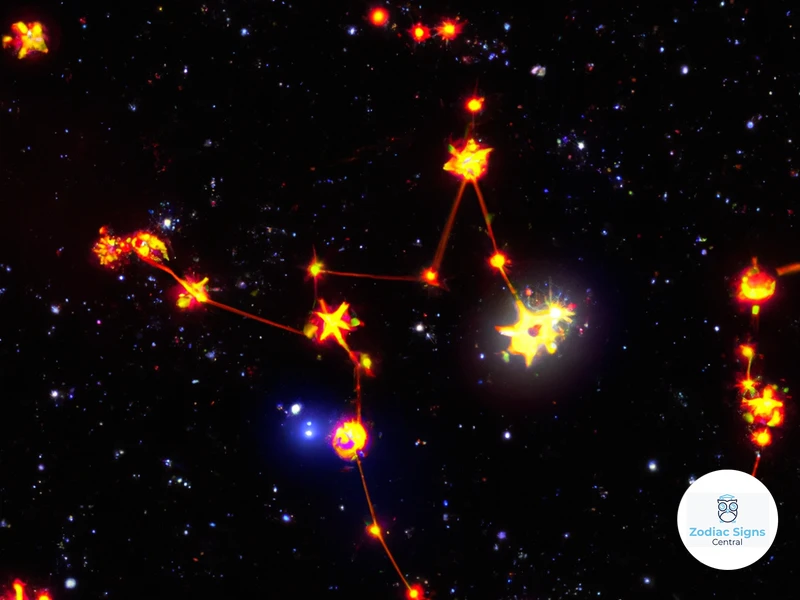
1. How do astrological aspects impact relationships?
Astrological aspects can greatly influence relationships by highlighting the strengths, challenges, and dynamics between individuals. They reveal compatibility, communication styles, and emotional connections between partners.
2. What are the major types of astrological aspects?
The major types of astrological aspects include conjunctions, sextiles, squares, trines, and oppositions. These aspects represent different energies and interactions between planets.
3. Can positive aspects indicate compatibility in a relationship?
Yes, positive aspects, such as trines and sextiles, can indicate compatibility in a relationship. These aspects often create harmony, mutual understanding, and a natural flow of energy between individuals.
4. What are some challenges indicated by negative aspects?
Negative aspects like squares and oppositions can indicate challenges in a relationship. These aspects may bring tension, conflicts, or contrasting energies that require effort and understanding to overcome.
5. How do aspects between personal planets impact a relationship?
Aspects between personal planets, such as the Sun, Moon, Mercury, Venus, and Mars, reveal the core dynamics and compatibility in a relationship. These aspects highlight areas of compatibility, communication styles, and emotional connections.
6. How do aspects involving the Moon influence relationships?
Aspects involving the Moon can greatly influence relationships as they reflect emotional compatibility, nurture, and instinctual reactions. These aspects can reveal how individuals connect on an emotional level and handle their emotions within the relationship.
7. What role do aspects involving Venus and Mars play in relationships?
Aspects involving Venus and Mars are crucial for understanding romantic and sexual dynamics in relationships. These aspects reveal attraction, passion, and compatibility in matters of love and intimacy.
8. What insights do aspects involving Jupiter and Saturn provide?
Aspects involving Jupiter and Saturn often indicate long-term compatibility, growth, and commitment in relationships. They can shed light on shared goals, values, and how individuals navigate responsibilities within the partnership.
9. How do aspects involving Uranus, Neptune, and Pluto impact relationships?
Aspects involving Uranus, Neptune, and Pluto have a transformative impact on relationships. These aspects often bring intensity, depth, and opportunities for personal and relationship growth.
10. Can astrological aspects determine the success of a relationship?
Astrological aspects alone cannot determine the success of a relationship. While they provide valuable insights, individual efforts, communication, and compatibility in other areas are equally important factors for a successful relationship.
References
- Relationship Potential in the Natal Chart
- Aspects of Love and Relationships: Compatibility in Astrology
Frequently Asked Questions

1. Can astrology predict the success of a relationship?
Astrology can provide insights into the dynamics and potential of a relationship. By analyzing the aspects between individuals’ birth charts, astrologers can identify the strengths and challenges that may arise in the relationship.
2. How do aspects affect romantic relationships?
Aspects in astrology represent the connections between planets in a birth chart. Positive aspects can enhance compatibility and harmony, while challenging aspects may introduce obstacles and conflicts into the relationship.
3. What are the major aspects to consider in relationship astrology?
The major aspects in astrology are the conjunction, opposition, trine, square, and sextile. These aspects carry different energies and can significantly impact the dynamics and compatibility between two individuals.
4. Are minor aspects important in analyzing relationships?
While major aspects hold more weight in relationship analysis, minor aspects can provide additional nuances and insights into the dynamics between individuals. It’s essential to consider both major and minor aspects for a comprehensive understanding.
5. How can we interpret aspects in synastry?
Synastry is the comparison of two birth charts to assess compatibility in a relationship. When analyzing aspects in synastry, it’s important to consider the nature and strength of the aspect, as well as the planets involved, to understand the potential dynamics and challenges between individuals.
6. Do positive aspects guarantee relationship compatibility?
Positive aspects can enhance compatibility and harmony in a relationship, but they are not the sole determining factor. Other factors like communication, shared values, and personal growth also play crucial roles in relationship compatibility.
7. How do negative aspects impact relationships?
Negative aspects can introduce challenges, conflicts, and tensions into a relationship. They may require extra effort and communication to overcome or grow through these challenges, but they do not necessarily signify the end of a relationship.
8. What do aspects involving personal planets indicate?
Aspects involving personal planets such as the Sun, Moon, Mercury, Venus, and Mars provide insights into how individuals express themselves, communicate, love, and assert their desires in a relationship. These aspects can shape the dynamics and compatibility between partners.
9. How do aspects involving outer planets influence relationships?
Aspects involving outer planets such as Jupiter, Saturn, Uranus, Neptune, and Pluto signify deeper themes in relationships, such as growth, transformation, and spiritual connections. These aspects can bring profound changes and intensity to a relationship.
10. Can astrology help navigate challenges in relationships?
Astrology can offer guidance and insights into the challenges faced in relationships. By understanding the aspects and energies at play, individuals can learn to navigate these challenges, communicate effectively, and grow together.
References
- Can Astrology Tell You If Your Relationship Will Last?
- Aspects of Love and Relationships: Compatibility in Astrology
- Predicting Marriage and Partner: Astrological Analysis




